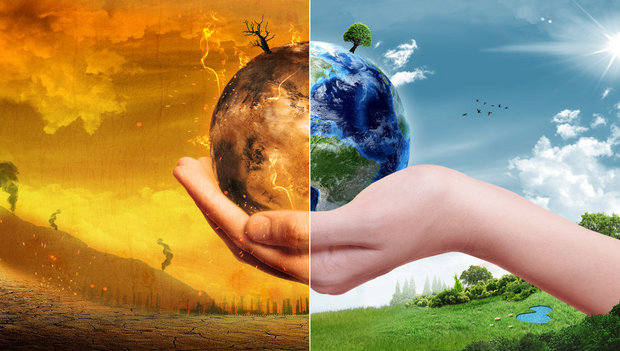Six months after 195 nations vowed tougher action to curb global warming, the problem has only grown worse, with higher accumulations of greenhouse gas emissions, record worldwide temperatures and widespread coral bleaching from hotter ocean waters.
On top of that, a new United Nations report documents increased pollution levels for the world’s cities.
The primary greenhouse gas that leaders at a global summit in Paris last December agreed to reduce — carbon dioxide (CO2) released from burning of fossil fuels — is now fixed above the historic milestone of 400 parts per million that was reached for the first time last year.
The worsening reports come as the U.N. convened a climate conference in Bonn, Germany, on Monday to assess the global warming problem.

In the planet’s Northern Hemisphere, where most of the world’s population lives and burns fossil fuels, a benchmark reading from the Mauna Loa volcano in Hawaii reached a monthly average of 407.42 parts per million in April. In the slightly cleaner Southern Hemisphere, readings from an Australian measuring station surpassed 400 parts per million last week, according to Australian scientists.
The rate of 400 parts per million is significant because the planet hasn’t seen that much carbon dioxide in the atmosphere for millions of years.
“This is the new normal. This isn’t going away,” said Pieter Tans, chief greenhouse gas scientist for the National Oceanic and Atmospheric Administration. He said the warming of the planet will be steady and inevitable. “It’s like we just set the thermostat at a higher level.”
A drumbeat of increasingly hotter temperatures continues. March was the 11th straight record-setting month for global temperatures, according to NOAA, the longest streak in 137 years of gathering data.
Global temperatures in March were 2.2 degrees above average. Tans and other scientists say a strong El Niño climate pattern that is now fading contributed to the heat, but the primary culprit is the global warming trend.
Tans said a direct result of accumulating CO2 is warmer, more acidic oceans waters creating havoc with coral formations by bleaching great stretches of reefs in the world’s oceans. The bleaching occurs when algae that live inside and nourish coral, providing their brilliant colors, wither from the warming waters and die, leaving behind white coral skeletons.
Global warming in the Philippines
The algae can return in some cases as temperatures decline. But episodes of coral bleaching have become far more widespread.
The 1,400-mile-long Great Barrier Reef of northeastern Australia has been decimated in recent months, with aerial and underwater surveys revealing that 93% of it has suffered some level of bleaching, according to the Australian-based ARC Centre of Excellence for Coral Reef Studies. About 81% of the reef’s northern third has severe bleaching, researchers found.
More recently, a U.N. World Health Organization report released Thursday found that 98% of the moderate and poor cities with more than 100,000 people live each day with poor air quality that violates health standards.
The good news is that more cities are monitoring air quality and more than half of high-income urban areas worldwide reduced pollution levels by 5% in five years. Overall, however, urban air pollution levels globally rose by 8% from 2008 to 2013, the time-span covered by the study.
“When dirty air blankets our cities the most vulnerable urban populations — the youngest, oldest and poorest — are the most impacted,” said Flavia Bustreo, WHO assistant-director general for family, women and children’s health.
